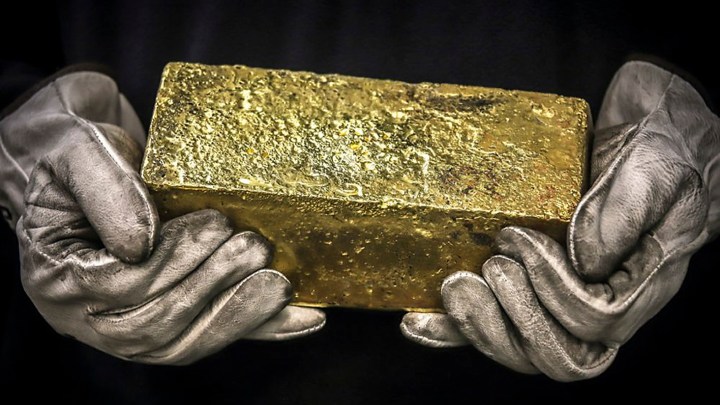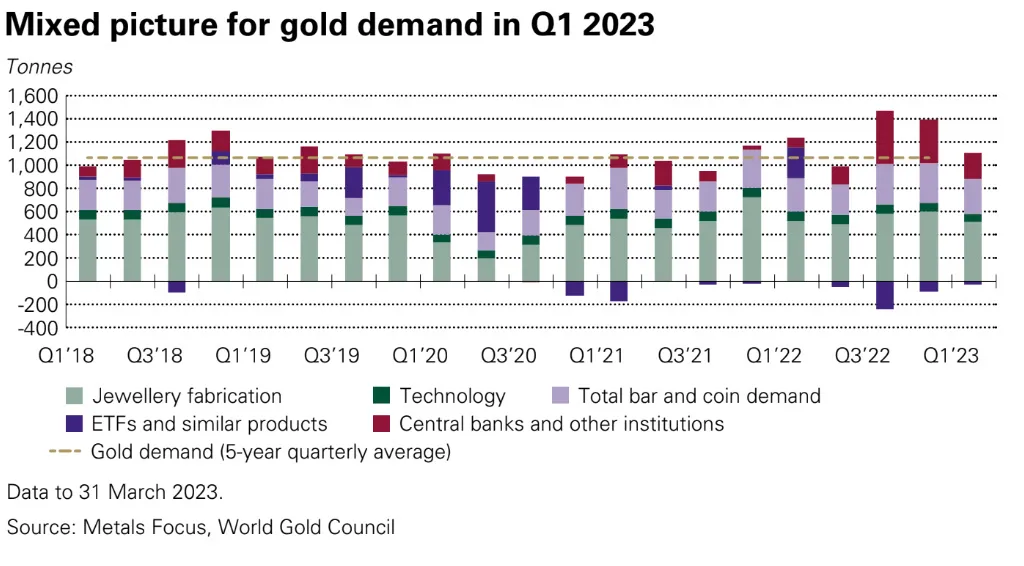WORLD GOLD COUNCIL REPORT
Gold’s near-record start to 2023 a reflection of the global economy

The gold sector had a red-hot start to 2023, with a near-record average high for the first quarter (Q1) of $1,890 an ounce. But the demand profile was mixed, with strong central bank purchases on one hand and a very poor showing in the technology sector on the other. This is a reflection of wider trends in the global economy, and gold mining shares are shining.
The World Gold Council’s latest quarterly Global Demand Trends report, covering Q1 2023, paints a mixed picture for the precious metal. But generally, the sector has soared into this year, and that is reflected in a rally in the shares of gold producers. JSE-listed Gold Fields, for instance, saw its share price hit a new record high above R317 on Thursday.
“The LBMA [London Bullion Market Association] Gold Price (PM) averaged $1,890 an ounce during the quarter, marginally higher y/y. The price was over 10% higher than the previous quarter’s average, almost matching the Q3 2020 record high,” the report said.
Gold’s price has been driven by its safe haven status amid growing uncertainties about the global economy, rising geopolitical tensions and persistent inflation, among other factors.
“Q1 gold demand, excluding over-the-counter (OTC) was 13% lower y/y at 1,081 tonnes. Inclusive of OTC, total gold demand strengthened 1% y/y to 1,174 tonnes as a recovery in OTC investment – consistent with investor positioning in the futures market – offset weakness in some areas,” the report said.
So, overall demand was up compared with the same period last year – a high base – and the trend showed investors are gearing up for the futures market.
The report also noted that central bank demand was 228 tonnes, a Q1 record for the data series used, which goes back to 2000.
“When we ask central banks what are the main reasons why they hold gold, they rank very highly that it is a long-term store of value. And increasingly in the last couple of years, they put more emphasis on its performance in times of crisis,” Louise Street, senior markets analyst at the World Gold Council, told Business Maverick in an interview.
It is also interesting to note that gold supply rose 1% y/y in Q1 2023 on the back of mine production of 856 tonnes – a Q1 record going back to 2000. Because of seasonal fluctuations in production, quarters are often compared this way.
A number of factors are likely behind this trend. Production may be ramping up because of prices, and projects that began years ago are now bearing fruit. Mechanisation, automation and other technical advances have also been lifting productivity in the past couple of decades. Such processes may be overcoming seasonal factors.
The timeline to 2000 is perhaps also revealing. This coincides with the steep and steady decline in gold production in South Africa, once by far the largest producer of the precious metal.
South Africa produced 110 tonnes of gold in 2022, a 74% plunge from 430 tonnes in 2000, according to World Gold Council data. And it is not even in the top 10 any more on the production front.
Other countries have been gradually moving in to fill that gap, diversifying the geographical spread of production.
Another revealing trend that has emerged is a sharp drop in industrial/tech demand for gold, such as for memory chips.
“Gold use in the technology sector continued to suffer from the challenging economic climate. Demand slumped to 70 tonnes – the second-lowest quarter in our data series back to 2000,” the report said.
“Gold usage in industrial applications suffered one of the weakest quarters on record as the global cost of living crisis slammed the brakes on consumer spending, translating to sharp inventory reductions across much of the electronics sector.”
This is a relatively small portion of overall gold demand, so it had a limited impact on the overall number. But it is an indicator of a sour global economy, as is the price surge.
And this quarter is shaping up to be another glittering one. Gold’s price on Thursday was back over $2,000 an ounce, so it could be poised for another run at its record of over $2,075 reached in August 2020. Gold Fields’ share price, as mentioned, is at record levels. AngloGold Ashanti’s is nearing its record peak and is up more than 55% in the year to date.
The rand/gold price also scaled a record high on Thursday above R1.2-million a kg.
But gold is no longer as crucial to the South African economy as it once was. It could use a rally in platinum group metals prices and they have been weighed down by the fragile global economy. DM/BM




















Comments - Please login in order to comment.